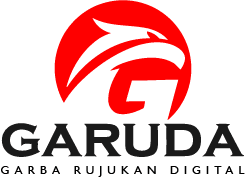Iklan Layanan Masyarakat Sensus Penduduk dengan Wawancara Atau Online Di Televisi Tahun 2020
DOI:
https://doi.org/10.37826/digicom.v2i3.342Keywords:
Public Service Advertising, Semiotics Charles Sanders Pierce, Census PopulationAbstract
Advertising is part of communication, because basically advertising is a message delivery process, where the message contains information about a product, both goods and services. When viewed from the purpose of making advertisements, advertisements are divided into commercial and non-commercial advertisements. One form of non-commercial advertising is public service advertisements. Public service advertisements generally contain messages about national awareness, humanity, health, education and the environment. This is used by a number of institutions and business entities in Indonesia to campaign for a program or activity or convey information to the public. As has been done by the Central Statistics Agency in campaigning for the 2020 Population Census by releasing a public service advertisement entitled Interview Population Census or Online? on television. This study aims to determine the meaning of the message contained in this service advertisement on television. This study uses a qualitative approach with the semiotic analysis method of Charles Sanders Pierce which in the process of analysis uses a triangle of meaning model which consists of sign, object and interpretant. Based on the results of the study, the researcher concluded that the public service advertisement entitled Interview Population Census or Online? on television has the meaning of the message that the Central Statistics Agency will conduct the 2020 Population Census with interviews and online as a form of understanding from the Central Statistics Agency towards the diverse characters of Indonesian society.
References
Bagoes Mantra, Ida. (2003). Demografi Umum. Yogyakarta: Pustaka Pelajar.
Cangara, Hafied. (2009). Pengantar Ilmu Komunikasi. Jakarta: PT Raja Grafindo Persada.
Durianto, Darmadi. (2003). Brand Equity Ten. Jakarta : Mitra Uta.
Effendy , Onong Uchyana. (2002). Ilmu Komunikasi, Teori dan Praktek. Bandung: PT. Remaja Rosdakarya.
Effendy , Onong Uchyana. (2003). Ilmu dan Filsafat Komunikasi. Bandung: PT. Citra Aditya Bakti.
Indonesia, Dewan Periklanan.(2005). Etika Pariwara Indonesia. Jakarta : Juli.
Jaiz, Muhammad. (2014). Dasar – Dasar Periklanan. Yogyakarta : Graha Ilmu.
Kasali, Rhenald. (1992). Manajemen Periklanan Konsep Dan Aplikasinya di Indonesia. Jakarta : Pustaka Utama Grafiti.
Kotler, Philip. (2002). Manajemen Pemasaran, Edisi Milenium Jilid 1. Jakarta: Prebalindo.
Kriyantono, Rakhmat. (2006). Teknik Praktis Riset Komunikasi. Jakarta: Kencana
Lauster, Peter. (2002). Tes Kepribadian. Jakarta: Bumi Aksara
Lee, Monle.& Johnson, Carla. (2011). Prinsip-prinsip Pokok Periklanan Dalam Perspektif Global. Jakarta : Kencana Prenada Media.
Liliweri, Alo. (1991). Memahami Peran Komunikasi Massa dalam Masyarakat. Bandung: Penerbit PT Citra Aditya Bakti.
Liliweri, Alo. (1992). Dasar – dasar Komunikasi Periklanan. Bandung : PT Citra Adyabakti.
Masri, Andry. (2010). Strategi Visual. Yogyakarta: Jalasutra










